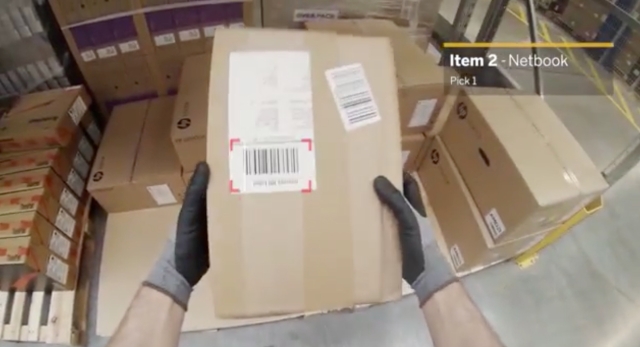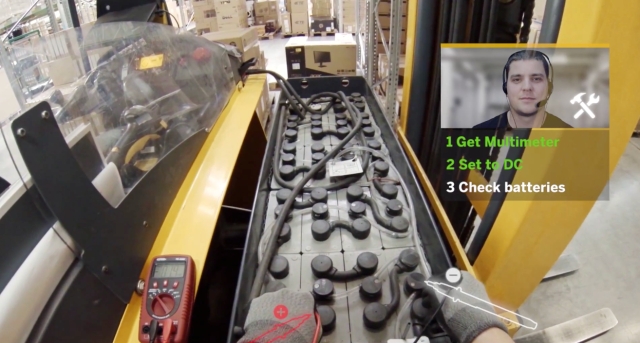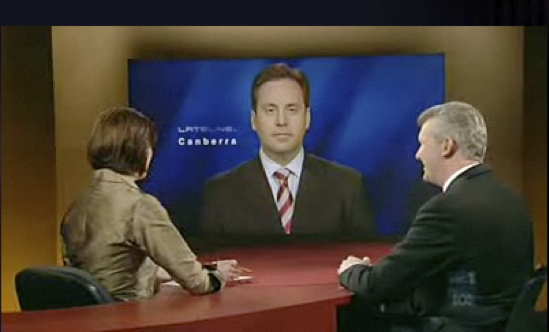A: If Google Glass didn’t exist, […] Silicon Valley guys would be having affairs or buying unsuitable motorbikes (As noted by a post on Tumblr: Ref 1). But as you will see, there are some compelling industry applications about to emerge…
If you are looking for compelling reasons not to buy Google Glass then checkout the many photos at White Men Wearing Google Glass (this site is ‘family friendly’, but not very stylish or elegant).
Then again, neither was this photo of Robert Scoble, taking a shower with Google Glass; nor did it help convince a sceptical public:
Then I came across this video (3 mins) from SAP and Vuzix (who manufactures their own augmented reality goggles for industrial applications) and things started to make a lot more sense:
Here was a compelling application of Google Glass technology in a commercial environment. This is a vision of the very near future – where warehouse pickers do their day to day jobs with great improvements in:
Quality
- Pickers were guided to exactly where they needed to go, to pick up and drop off
- They were also reminded of size and quantities required as they got to where the items were located – location context
- Items and quantities were confirmed as they were picked

Picture 1: Augmented Picking – Pickers guided to exactly where they needed to go to pick up and drop off
Productivity:
- Picking slips could be prioritised and served up to the closest worker, cutting down time criss crossing the warehouse
- Scanning can take place as the items are picked up – hands free – there was no fumbling with extra scanning equipment
- Pickers could be informed of possible equipment malfunctions and directed to perform simple repairs – including video calls to specialists for help

Picture 2: Augmented Scanning – Scanning takes place – hands free – as the items are picked up – there was no fumbling with extra scanning equipment
Safety
- Pickers didn’t have to take their eyes off of where they were going
- They were forewarned of possible collisions – relevant location context again
- The goggles could be shatter resistant to comply with Occupational Health and Safety (OHS)

Picture 3: Augmented Diagnostics – Pickers informed of possible equipment malfunctions and directed to perform simple repairs – including video calls to specialists for help
Google Glass is a strange set of contradictions:
- Google Glass – is a Heads Up Display (HUD) for consumers – which will connect & deluge consumers with information like never before
- Yet the original appeal of HUDs was to minimise information overload and maximise efficiency of pilots and (now) drivers
- Google Glass is a whole new category of ‘wearable computers’ – and the latest wave of the consumerisation of IT
- Yet so early in its introduction it elicits as much fear and loathing – especially around privacy – as it does wonderment – unlike the introduction of the iPhone nearly 6 years ago, back then people where either mesmerised or ambivalent
To me there are two factors missing with Google Glass:
- Google Glass is incredibly bulky: Seeing someone wear them is distracting, almost ugly – especially in a world where you pay more for elegant glasses and sun glasses. Today’s Google Glass is a slightly evolved prototype, it is is a bit like looking at the Wright Brother’s Flyer and dismissing the next 100 years of the aviation industry. Clearly the technology will rapidly evolve – Google Glass should (hopefully) become indistinguishable from regular glasses and sun glasses – which raises all kinds of new concerns around privacy.
- Where are the applications? The initial applications merely replicate the basic functions of today’s smartphones – to me there is nothing particularly unique or compelling about Google Glass, especially as it isn’t that hard for me to look at the smartphone in my hand. But applications like above, make this kind of technology a lot more compelling.
Conclusions:
To me this is a perfect example of devices, networks and applications coming together to enrich the way we work and play (but more work in this case).
It is also an example of how unified communications is evolving into supporting Communication-Enabled Business Processes (CEBP) a way of optimising business processes by reducing human latency that can exist within a process flow. I like to think of it how ICT is starting to become woven into the fabric of our day-to-day lives. More on this next time; or check out my previous blog on CEBP in the finance industry with “The Virtual Expert – enriched customer experiences.”
PS. Google Glass is already having an impact on society at large – with some impacts that Google may never have intended.
The Urban Dictionary has 8 definitions for the term “Glasshole.” 7 of these definitions have an average of 40 likes (+ or -) referring to glaziers, or obnoxious ice hockey fans…. The latest definition (below) has nearly 10,000 likes since it was first posted 3 months back (March 2013):
Glasshole (noun) – A person who constantly talks to their Google Glass, ignoring the outside world…
























